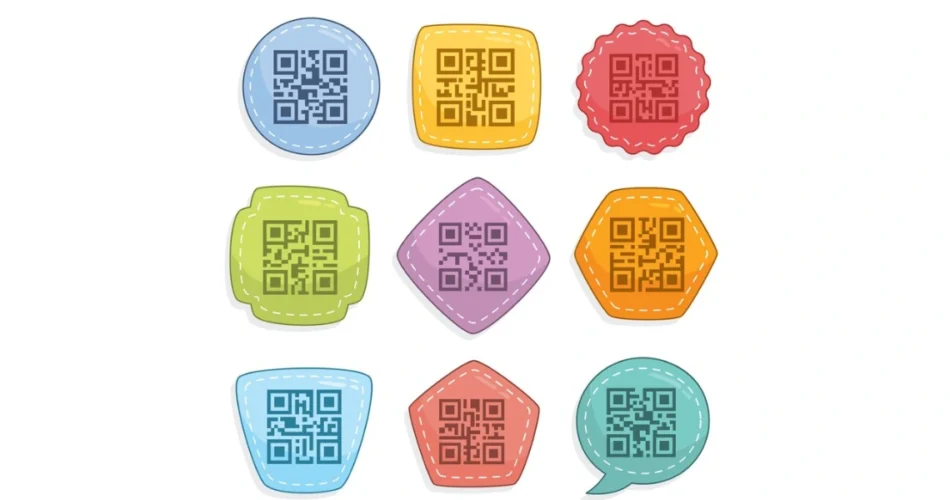QR Codes have revolutionized how we access information, bridging the physical and digital realms seamlessly. But have you ever wondered if there’s more to QR Codes than meets the eye?
If you think QR Codes are just square-shaped, think again. There are various QR Code shapes that have come to the forefront recently.
We will explore a diverse range of applications for these distinctive QR Code shapes. From heart-shaped QR Codes to circular QR Codes, there are many shapes to be discovered.
So let’s get started with it!
A. How to create different QR Code shapes

Creating a QR Code with different shapes is as easy as it gets. You don’t need to visit various websites or scour through the internet to create one. Just follow these steps to create different QR Code shapes.
1. Begin by accessing the Scanova QR Code Generator online.
2. Select a relevant content category according to your preference. For example, choose the “Website URL” option from the menu and input your desired URL. This URL serves as the destination when the QR Code gets scanned.
3. Make a choice between a “static” or “dynamic” QR Code. The default selection is the dynamic option.
4. Initiate the QR Code generation process by clicking the “Generate QR Code” button. This action creates a basic black-and-white QR Code linked to your website.
5. Locate the “Edit Design” button beneath the QR Code on the right and click it. You will encounter two design options; opt for the “Custom Logo” option.
6. On the displayed screen, you’ll find various tabs for adding a logo, editing the appearance of the eyes, adjusting data, and modifying the background. Within these choices, you’ll also see the “Frame” option.
7. Choose your preferred shape/frame design from either the “Suggested” or “All” options based on your preference.
8. Once you’ve completed all other design adjustments, proceed to the next step.
9. Verify the functionality of your QR Code. Prior to downloading and using it, test the QR Code with various devices and QR Code scanning applications to ensure its correct operation, accurately directing users to the intended URL.
10. Acquire your QR Code by downloading it. Scanova offers the flexibility to download your QR Code in multiple formats suitable for both print and digital applications.
11. You are now prepared to integrate your QR Code into your marketing materials. Position it prominently where it can be easily noticed and scanned by your target audience.
Generate a QR Code For Your Unique Case
START TODAY!
B. Why are different QR Code shapes important
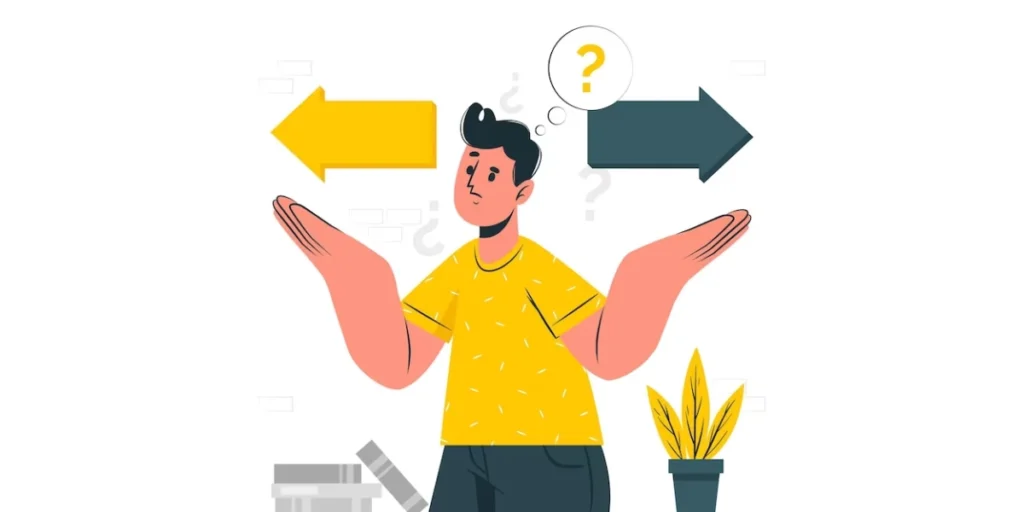
While traditional square QR Codes are the most commonly used, the emergence of diverse QR Code shapes has introduced a new dimension to their importance.
Here’s why different QR Code shapes matter:
1. Aesthetic appeal
Different QR Code shapes allow for greater aesthetic flexibility. Square QR Codes can sometimes clash with the design of printed materials, packaging, or artwork. By using custom shapes such as circles, hearts, or logos, QR Codes can seamlessly blend into their surroundings, enhancing the overall visual appeal of the content.
2. Branding and customization
QR Code shapes can be customized to align with brand logos, product designs, or marketing campaigns. This branding potential helps in creating a stronger connection between consumers and brands, making QR Codes an integral part of a company’s identity.
3. Enhanced user experience
Non-traditional QR Code shapes often convey a sense of purpose or context. For instance, a heart-shaped QR Code on a greeting card immediately communicates a message of love and sentimentality. Such designs enhance the user experience by adding emotional or thematic value to the interaction.
4. Artistic integration
Artists, architects, and designers have embraced diverse QR Code shapes as a canvas for creativity. By embedding QR Codes into sculptures, murals, or installations, they transform technology into an art form, merging the digital and physical worlds in captivating ways.
5. Accessibility and functionality
Different QR Code shapes can be strategically used to serve specific purposes. For instance, circular QR Codes can be integrated into round products or packaging, ensuring a more harmonious fit. This adaptability makes QR Codes accessible in a wider range of applications.
6. QR Code scanning
The technology behind QR Code scanning has evolved to accommodate different shapes. Modern QR Code scanning apps and devices are capable of recognizing and decoding various shapes, ensuring that users can access information seamlessly, regardless of the code’s design.
7. Novelty and engagement
Unique QR Code shapes pique curiosity and encourage interaction. People are more likely to scan a creatively designed QR Code out of sheer interest, which can lead to increased engagement and conversions.
C. QR Code shapes and their significance
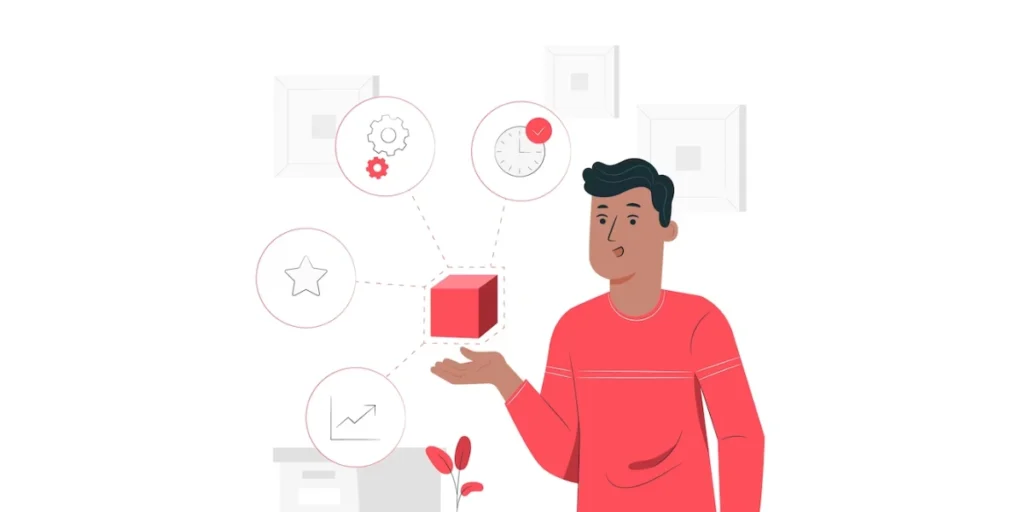
In recent times, diverse QR Code shapes offer exciting possibilities.
Let’s explore various QR Code shapes and their significance:
1. Square QR Codes
The classic square shape is highly functional and recognizable. It’s commonly used for a wide range of applications, from product packaging and advertising to event tickets. Its significance lies in its ubiquity and ease of scanning, making it a reliable choice for everyday use.
2. Circular QR Codes
Circular QR Codes are a popular choice for branding and design-conscious applications. They often appear on round products or marketing materials, seamlessly integrating with the product’s aesthetics. Their significance lies in their ability to blend into designs while maintaining scanning functionality.
3. Heart-shaped QR Codes
Heart-shaped QR Codes are a delightful way to convey emotions and messages of love. They are frequently used in greeting cards, wedding invitations, and romantic gestures. Their significance is in adding a touch of sentimentality and personalization to digital interactions.
4. Logo or custom-shaped QR Codes
Custom-shaped QR Codes can take on various forms, such as company logos, product silhouettes, or themed designs. These shapes are significant for branding and marketing purposes, as they reinforce brand identity and create a unique visual connection between the QR Code and the associated content.
5. Artistic and thematic QR Codes
QR Codes have found their way into the world of art and design. Artists and architects use QR Codes as a canvas to convey messages, tell stories, or provide additional context to their creations. The significance here is in the fusion of technology and art, creating immersive and interactive experiences.
6. Geometric QR Codes
QR Codes can take on various geometric shapes, such as triangles, hexagons, or pentagons. These shapes are often chosen for their aesthetic appeal and can be integrated into designs where symmetry and balance are crucial. Their significance lies in design harmony and visual impact.
7. Complex QR Code patterns
Some QR Codes use intricate patterns within their shape. These patterns can serve both aesthetic and functional purposes, as they may contain additional data or security features. Their significance is in data density and enhanced security.
8. Scalable QR Codes
They can be designed to scale up or down without losing scanability. This scalability is significant for applications where QR Codes need to fit various sizes, from billboards to business cards.
9. Interactive QR Codes
These codes can be combined with augmented reality (AR) to create interactive experiences. Scanning the QR Code may trigger animations, videos, or 3D models. Their significance is in enhancing user engagement and providing immersive content.
10. Accessibility QR Codes
QR Codes can also be designed with accessibility in mind, incorporating features like larger dots and more prominent patterns to aid individuals with visual impairments. Their significance lies in promoting inclusivity and equal access to information.
D. Benefits of using different QR Code shapes

1. Enhanced aesthetics
Different QR Code shapes can be integrated seamlessly into designs, making them visually pleasing and harmonious with various materials, products, and marketing materials.
2. Brand reinforcement
Custom-shaped QR Codes incorporating logos or unique designs reinforce brand identity, helping companies establish a memorable connection between their brand and digital content.
3. Emotional expression
Shapes like hearts or thematic designs can convey emotions and messages, adding depth and sentimentality to interactions.
4. Artistic creativity
Artists and designers use QR Codes as a canvas for creative expression, merging technology and art to contribute to the evolving landscape of digital art.
5. Improved accessibility
Certain shapes are more compatible with specific products or environments, enhancing accessibility and user experience.
6. Increased engagement
Unique QR Code shapes pique curiosity and encourage interaction, leading to greater engagement with digital content and marketing campaigns.
7. Functional adaptation
Complex patterns or custom shapes can incorporate additional data or security features, making them valuable in applications requiring enhanced functionality.
8. Scalability
Some QR Codes are designed to be scalable, maintaining their scannability when resized, allowing them to be used across a wide range of applications.
9. Inclusivity
QR Codes can be designed with accessibility features, ensuring equal access to information for individuals with visual impairments.
10. Interactive experiences
QR Codes combined with augmented reality (AR) provide interactive and immersive experiences, offering users dynamic and engaging encounters.
E. Choosing the right QR Code shape

Selecting the right QR Code shape is quite crucial for your business or marketing needs. Here are some factors to consider before you choose the perfect QR Code shape!
1. Consider your brand
If you’re using QR Codes for branding or marketing purposes, opt for shapes that align with your brand identity. Custom-shaped QR Codes, incorporating your logo or brand elements, reinforce brand recognition.
2. Functionality matters
Ensure that the chosen shape doesn’t compromise scanning functionality. While unique shapes are appealing, they must still be easily scannable with standard QR Code readers.
3. Contextual relevance
Think about the context in which the QR Code will be used. For instance, heart-shaped QR Codes are great for romantic messages but may not suit all scenarios.
4. Aesthetics and integration
Choose shapes that integrate seamlessly with your design or product. Circular QR Codes often fit well with round objects, while geometric shapes can add symmetry and balance to designs.
5. User engagement
Consider the level of user engagement you want to achieve. Unique shapes can pique curiosity and encourage scanning, potentially increasing engagement with your content.
6. Artistic or creative endeavors
If you’re using QR Codes in art or design projects, let your creativity shine. Explore shapes that enhance your artistic expression and complement your vision.
7. Accessibility
Ensure that your chosen shape is accessible to all users. If inclusivity is important, consider using shapes that are designed with accessibility features for those with visual impairments.
8. Interactive experiences
If you plan to create interactive experiences with augmented reality (AR) or animations triggered by the QR Code, choose a shape that suits the narrative or theme of your content.
9. Scalability
If your QR Code will be used across various sizes of materials, opt for a shape that maintains scannability when resized. This ensures consistent functionality.
10. Security and data requirements
For applications requiring enhanced security or additional data, select shapes that can accommodate complex patterns or extra information.
11. Testing and feedback
Before finalizing your choice, conduct testing with different QR Code shapes and gather feedback from users. This can help you identify any potential usability issues.
12. Legal considerations
Be aware of any legal or trademark restrictions when using custom shapes, especially if they incorporate copyrighted logos or designs.
F. Future trends in QR Code shapes
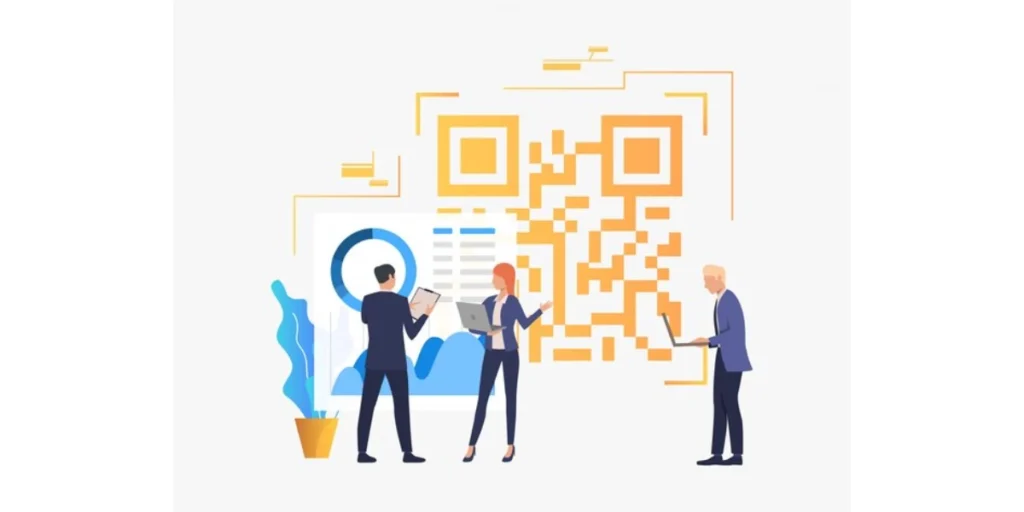
The world of QR Codes is constantly evolving, and as technology and design trends advance, we can anticipate several future trends in QR Code shapes:
1. Customization boom
Custom-shaped QR Codes will become even more prevalent. Companies and individuals will increasingly design QR Codes that incorporate their logos, product silhouettes, or other distinctive branding elements.
2. Dynamic and interactive shapes
QR Codes will not be static rectangles or traditional shapes. They will evolve into dynamic, interactive forms that change appearance when scanned or respond to user interactions, adding an extra layer of engagement.
3. Geometric variations
QR Codes will adopt a wider range of geometric shapes beyond circles and hearts. Expect to see QR Codes in various polygons, hexagons, and other unconventional geometric patterns.
4. 3D QR Codes
With the rise of augmented reality (AR), 3D QR Codes that pop out of the screen or exist in three-dimensional spaces will gain popularity, offering unique scanning experiences.
5. Animated QR Codes
Animated QR Codes will emerge, featuring moving parts or patterns. These animations could serve as attention-grabbers in marketing and interactive design.
6. Artistic and thematic complexity
QR Codes will be used as canvases for intricate artwork, mosaics, and themed designs. These artistic QR Codes will become collectibles and add aesthetic value to various applications.
7. Augmented reality integration
QR Codes will be deeply integrated with AR experiences. Scanning a QR Code could trigger augmented reality overlays, allowing users to interact with virtual content in real-world environments.
8. Enhanced security shapes
For secure applications like ID verification or access control, QR Codes may adopt complex, layered patterns that incorporate encryption and authentication features.
9. Eco-friendly shapes
As sustainability becomes a global concern, QR Codes may adopt eco-friendly shapes or patterns to promote green initiatives and environmentally conscious brands.
10. Inclusivity and accessibility
QR Code designers will increasingly consider accessibility, creating shapes and patterns that are easily distinguishable by individuals with visual impairments or color blindness.
11. Holographic QR Codes
Advancements in holography may lead to the development of holographic QR Codes that offer futuristic and eye-catching scanning experiences.
12. Sound-activated shapes
Future QR Codes might incorporate sound activation, allowing users to scan them using audio cues or voice commands.
13. Multisensory experiences
QR Codes could engage multiple senses, combining visual, auditory, and even tactile elements for immersive experiences.
14. Integration into wearable tech
As wearable technology becomes more widespread, QR Codes may take on shapes and forms suitable for integration into smartwatches, glasses, and other wearable devices.
15. Global cultural influences
QR Code shapes could draw inspiration from cultural symbols and traditions from around the world, reflecting diversity and inclusivity.
G. Best practices for QR Code shapes

Selecting the right QR Code shape is crucial to ensure functionality, aesthetics, and user engagement. Here are some best practices for choosing QR Code shapes:
1. Maintain scannability
The primary function of a QR Code is to be scanned easily. Regardless of the shape you choose, ensure that it doesn’t compromise the code’s scannability. Test it with various QR Code scanning apps and devices to confirm that it works effectively.
2. Consider branding
If you’re using QR Codes for branding or marketing, incorporate your brand elements into the shape. Custom-shaped QR Codes that include logos or relevant design elements reinforce brand identity and recognition.
3. Contextual relevance
Select a shape that is contextually relevant to your content or message. Heart-shaped QR Codes are great for romantic messages, while circular ones might suit round products or logos. Choose shapes that align with the purpose.
4. Aesthetic integration
Ensure the chosen shape integrates seamlessly with your design or product. The QR Code should complement the overall aesthetics and enhance the visual appeal of your materials.
5. Engage users
Unique shapes can pique curiosity and encourage users to scan the QR Code. Consider the level of user engagement you want to achieve and choose a shape that aligns with your goals.
6. Accessibility
If inclusivity is a concern, opt for shapes that are easily distinguishable by individuals with visual impairments or color blindness. Accessibility should be a priority in design.
7. Functional adaptation
Depending on your use case, choose a shape that accommodates your functionality requirements. For instance, complex patterns may be suitable for applications requiring enhanced security or additional data storage.
8. Testing and feedback
Before finalizing your choice, conduct thorough testing with real users and various scanning devices. Gather feedback to identify any usability issues or potential improvements.
9. Scalability
If your QR Code will be used across different sizes of materials, select a shape that maintains scannability when resized. Consistency in functionality is essential.
10. Interactive potential
Explore how the chosen shape can be used for interactive experiences. QR Codes can trigger augmented reality (AR) content or animations, adding an extra layer of engagement.
11. Legal considerations
Be aware of any legal or trademark restrictions, especially when using custom shapes that incorporate copyrighted logos or designs. Ensure that your design complies with copyright and trademark laws.
12. Simplicity and clarity
Keep the design simple and clear. Overly complex shapes may confuse users and hinder scanning. Aim for a balance between creativity and clarity.
13. Eco-friendly options
Consider eco-friendly shapes or patterns that align with sustainability initiatives, especially if your brand or campaign promotes environmental consciousness.
Generate a QR Code For Your Unique Case
START TODAY!
H. FAQs: QR Code shapes
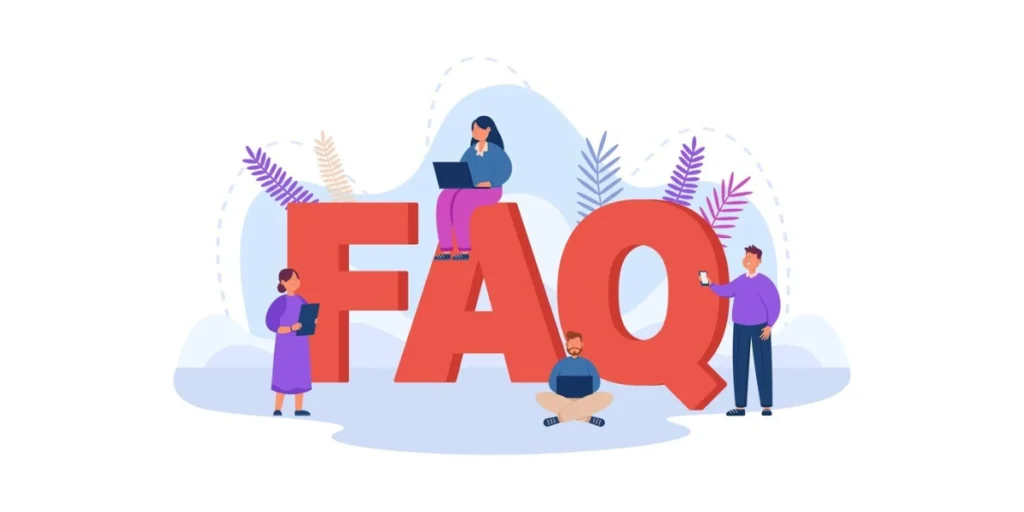
1. What are QR Code shapes?
QR Code shapes refer to the various forms and designs that QR Codes can take beyond the traditional square shape. These shapes can include circles, hearts, logos, and more, adding aesthetic and branding elements to QR Codes.
2. Why would I use a different QR Code shape?
Using different QR Code shapes offers several advantages, including enhanced aesthetics, improved branding, emotional appeal, artistic expression, and the ability to fit into various design contexts.
3. Do different QR Code shapes affect scanning?
Different QR Code shapes should not affect scanning functionality as long as they are designed correctly. However, it’s essential to test the shape to ensure that it can be scanned easily with QR Code readers.
4. How can I create a custom-shaped QR Code?
You can create a custom-shaped QR Code using Scanova’s QR Code Generator.
5. Are there any limitations to QR Code shapes?
While QR Codes can take various shapes, it’s essential to balance aesthetics with functionality. Overly complex shapes or intricate designs may hinder scanning or lead to errors. Additionally, custom shapes should adhere to copyright and trademark laws.
6. What are some popular QR Code shapes and their uses?
– Circular QR Codes: Suitable for round objects or products with a circular logo
– Custom-shaped QR Codes: Incorporate brand logos or unique designs for branding and recognition
– Geometric QR Codes: Add symmetry and balance to designs with various polygonal shapes
7. Can I use different QR Code shapes for my business’s branding?
Yes, custom-shaped QR Codes can be an excellent branding tool. You can incorporate your brand’s logo or design elements into the QR Code, reinforcing brand recognition and making it visually appealing.
8. Are there any accessibility considerations when using different QR Code shapes?
Yes, accessibility is essential. When using different QR Code shapes, ensure that they are easily distinguishable for individuals with visual impairments or color blindness. Consider contrast and clarity in design.
9. Are there QR Code shapes suited for interactive experiences?
Yes, some QR Code shapes, such as those with augmented reality (AR) integration or animations, can create interactive experiences for users. These shapes trigger additional content when scanned, enhancing engagement.
10. What are some emerging trends in QR Code shapes?
Emerging trends include dynamic and interactive shapes, 3D QR Codes, holographic QR Codes, multisensory experiences, and shapes integrated into wearable technology. The future of QR Code shapes is likely to be diverse and innovative.
Summing Up
As we’ve delved into QR Code shapes, it’s evident they go beyond mere functionality. They tell stories, evoke emotions, and elevate user experiences in ways traditional QR Codes can’t.
Whether you’re a business, an artist, or just curious about QR Code shapes, now is an exciting time to explore this evolving field. With technology and design constantly progressing, we can anticipate even more innovative QR Code shapes and experiences in the future.
If you’re still reading, you’ve already learned everything about QR Code shapes. If you have any questions, let us know in the comments.
